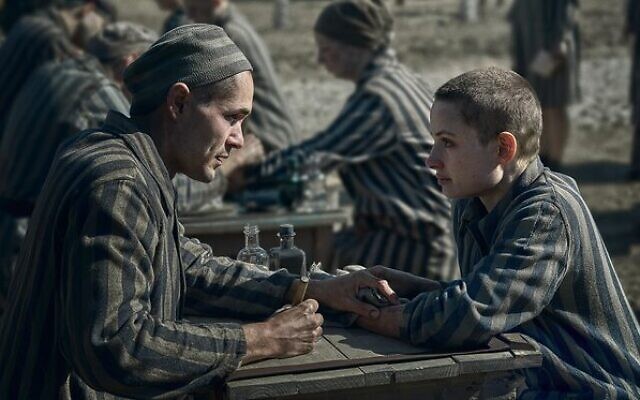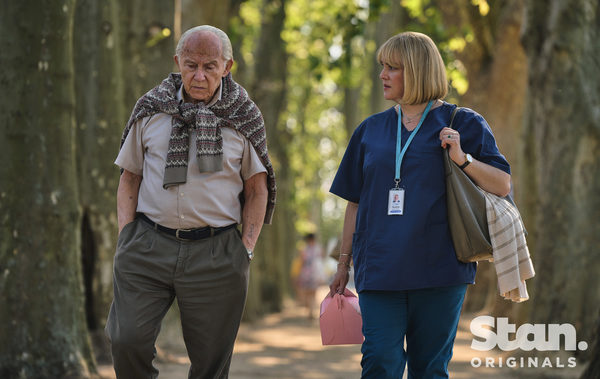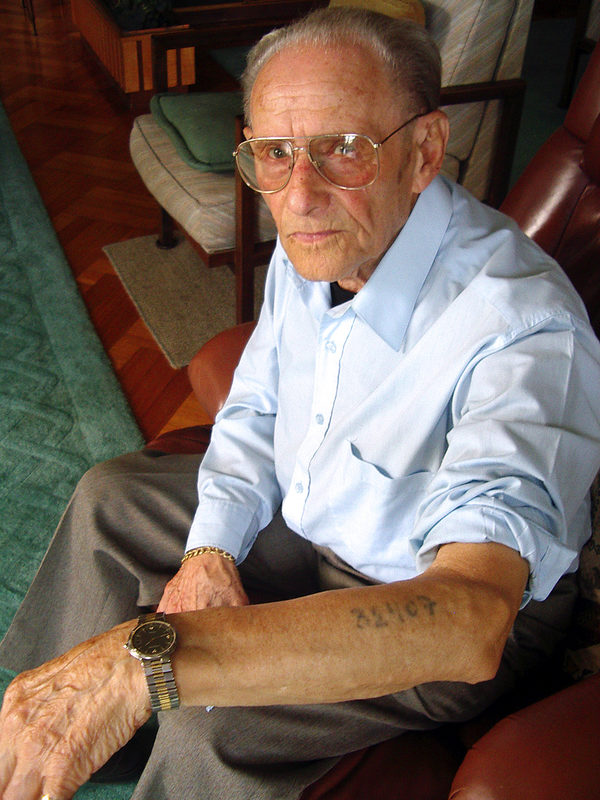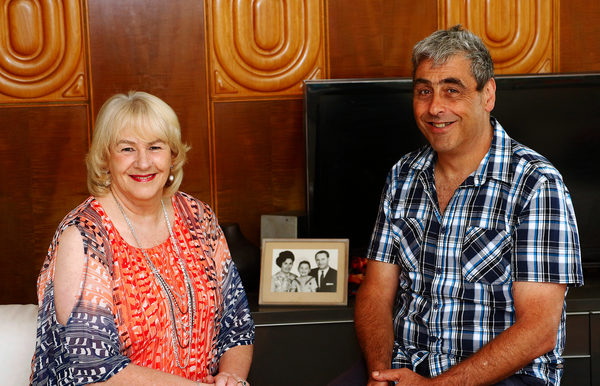The love story of Australian Holocaust survivors becomes a TV series
It is Lale Sokolov’s story (born Ludwig Eisenberg), of how in 1942 he was sent to Auschwitz-Birkenau, Nazi Germany’s largest concentration camp and death camp.

How two people could fall in love at Auschwitz, the site of humanity’s most brutal horrors, is difficult to imagine and yet it is a true story.
It is Lale Sokolov’s story (born Ludwig Eisenberg), of how in 1942 he was sent to Auschwitz-Birkenau, Nazi Germany’s largest concentration camp and death camp, where he was given the role of tattooing numbers on prisoners’ arms. A few months after arriving, he tattooed the arm of 18-year-old Gita Furman, and fell in love. Incredibly, both Lale and Gita survived Auschwitz, married in 1945 and moved to Australia in 1949, where they had a son Gary in 1961.
When Gita passed away, Lale decided he wanted to record his story, and his son Gary put him in touch with aspiring screenwriter Heather Morris in 2003.
Over the years Lale told his story to Morris, who was not Jewish, and she inscribed his memories in her first book The Tattooist of Auschwitz, published in 2018, which became an international bestseller.
Following the success of the novel, we now have a TV series which not only tells the story of how Lale and Gita fell in love at Auschwitz but also shows an elderly Lale, played by Harvey Keitel, telling his story to Heather Morris (Melanie Lynskey). It also reflects upon the trauma Lale experienced in old age and focuses more on Gita’s story.
Israeli filmmaker Tali Shalom Ezer spoke to The AJN about why she wanted to direct and co-produce The Tattooist of Auschwitz. She said, “There’s something so inspiring about Lale and Gita … because they went through a process of dehumanisation when they were in Auschwitz, and something in them said no to it … their love was an act of defiance.”
On working with acclaimed actor Keitel, Shalom Ezer said, “Harvey is an incredible actor. It’s really one of the most powerful experiences that I had in my professional life working with him because he is a true artist.”
The series shows the dehumanisation of Auschwitz in great detail – the line ups, the barracks, the hard labour, the starvation, illness, emotional trauma, executions and the gas chambers.
While the novel The Tattooist of Auschwitz is based on the memories that Lale told to Morris, it faced criticism from the Auschwitz Memorial Research Centre who claimed it “contains numerous errors and information inconsistent with the facts, as well as exaggerations, misinterpretations and understatements”.
In response to this criticism Morris said, “I have not written the story of the Holocaust, but a Holocaust story: [Lale’s] story, as he remembered it in his late 80s.”
The book and the TV series are sure to fuel continued debate on the telling of stories based on memory, and the responsibility for historical accuracy.
Asked how the series tackled the issue of historical accuracy, Shalom Ezer told The AJN, “I felt a huge responsibility with telling the story because it is a true story … I would like to say that for us always, our guiding light was to tell Lale’s story in the way that he remembered it … We did a lot of research. We had a historical and cultural consultant … And we watched documentaries and looked to archive footage … and listened to many testimonies.”
Regarding the film’s representation of Australia in the series, Shalom Ezer said she thinks it reflects that “trauma doesn’t go away” and that “even in this beautiful place of St Kilda in Melbourne in this sunny place which is supposed to be hopeful, you see that Auschwitz never left him.”
On meeting Lale and Gita’s son Gary in London with his children at the world premiere of the series, Shalom Ezer said, “It was one of the most emotional, moving moments for me in this whole production.”
Speaking to The AJN, Gary said of the production, “They put so much heart into this.”
He said he couldn’t believe he was watching the story of his parents on the big screen and had “tears of joy”. His father passed away in 2006.
“Mum and Dad are world famous now, if only my parents knew they would get so much naches from this.”
Gary said he was so impressed by the effort that Keitel went to copy his father’s mannerisms, and the way in which the production had recreated their family home in Melbourne for the series.
Gary was also thrilled that Barbra Streisand came out of retirement to release a new song for the series, titled Love will Survive. He told The AJN that Morris consulted extensively with the TV production and kept her promise to him to tell his parents’ story respectfully. He expressed that he was “exceptionally happy” with the series and feels it “could not have come at a better time”, as it “gives people a sense of hope that things can get better” even in the darkest of times.
The Holocaust was the darkest of times, a period in which six million Jews were killed, which is over six million stories of tragedy and horror. At Auschwitz alone, 1.1 million people were killed. But Lale and Gita’s story is one of survival and love, and that too is worth remembering.
The Tattooist of Auschwitz is available to watch now on Stan.

An elderly Lale Sokolov (Harvey Keitel) with Heather Morris (Melanie Lynskey).

The real Lale Sokolov.

Heather Morris with Gary Sokolov next to a picture of his parents. Photo: Peter Haskin.

Cast Jonah Hauer-King and Anna Prochni with Gary Sokolov and his daughters Aviva and Mali in London.

Gary Sokolov with his daughters Aviva and Mali with director Tali Shalom Ezer in London.

comments